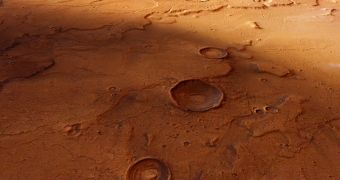New images relayed back to Earth by the European Space Agency's (ESA) Mars Express orbiter suggest that a region called Acidalia Planitia was partially sculpted by the actions of liquid water.
The area lies in the northern lowlands of Mars, in a giant basin that the ESA spacecraft has been studying for a while. The discovery again confirms that our neighboring world may have been covered by large volumes of water early on in its history.
Mars has been bone-dry for at least 1 billion years, perhaps a lot more. However, spacecraft surveying the planet either from orbit, or from the surface, suggest that this place was once a fertile world, which may have easily supported Earth-like lifeforms.
One of the reasons ESA decided to focus its attention on Acidalia Planitia is that experts suspected that at least parts of the area might have been sculpted by the flow of liquid water. The Mars Express images proved that this was indeed the case.
The photos reveal subtle signs of so-called dendritic drainage patterns, thus named because they resemble protrusions (dendrites) seen in nerve cells called neurons, in the human brain. These landscape features were most likely caused by water draining from the nearby Tempe Terra region.
These images were collected using the Mars Express high-resolution stereo camera, on June 21, 2011. The team that analyzed them says that the runoff water was most likely not a river, but rather produced during spring thawing, or rain overflows.
“The presence of deep valleys […] shows that the region itself probably formed by a process called ‘sapping’ or ‘undermining’, which occurs when erosion along the base of a cliff wears away softer layers of material,” ESA scientists explain in a press release.
“Sapping removes support for the upper harder rock which breaks off into large blocks, and falls from the cliff face. This way, deep valleys can erode progressively upwards, as can be seen in the Colorado Plateau on Earth,” the document adds.
What planetary scientists are interested in at this point is figuring out how liquid water acted on the Martian surface at different epochs in the planet's history. This could be very important for figuring out what happened to this once friendly world.

 14 DAY TRIAL //
14 DAY TRIAL //